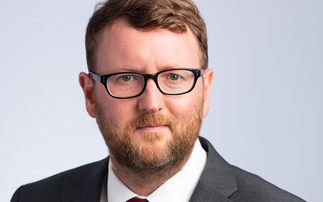Experts have called for trustees to improve pension communications using psychological and administrative techniques ahead of the fourth annual Pensions Awareness Day.
This week, a double-decker bus has been steered across the country in a bid to get everyone talking about pensions, ending its journey in London tomorrow (15 September), Pension Awareness Day.
Created by Pension Geeks and Scottish Widows, the day is designed to help members understand how much they will need in retirement, and what they need to do to reach their savings goals.
However, trustees also play a big part in driving member engagement. So what methods are most effective?
- Use YOU and not WE, and be present
Stop being so self-obsessed and stamp out your use of "we" and "our" in your communications, says Behave London founder and director Hannah Lewis.
"You're creating psychological distance for the member and making it hard to relate to what you're asking them to do. Stop talking about yourself, your company, your scheme, and start talking about them - the member."
Lewis also suggests writing in the present tense, and using actionable language such as "go, get, have, and do".
Like Minds senior communication consultant Banafsheh Ghafoori adds trustees should ensure their language suits members' characteristics and backgrounds, arguing most people engage better when they feel they are being spoken to in their style and with them, rather than at them.
"Conversational style can usually help with this and also explain complex pension jargon. It removes that teacher-student behaviour, and opens it up for members to ask the questions they have been too nervous to ask before."
- Do not make assumptions about member knowledge
Trustees should be mindful of how members wish to engage and how much they know about pensions, adds Ghafoori.
"If they are not sending information in a format which members want, when they want or at the frequency they want, trustees may actually end up disengaging their members."
She adds that if members are given an overload of complex pensions information, trustees run the risk that members could ignore the communication, make bad decisions or destroy it: "Trustees should decide the detail they want to provide, versus what they should provide."
- Administration
Administration teams can definitely support a communication strategy, according to Pensions Administration Standards Association's (PASA) Geraldine Brassett, who is chairwoman of its industry policy committee, and guaranteed minimum pension and pensions dashboard working groups.
"If, for example, a member requests a retirement quote or other readily-available online information, administrators should take the time to walk the member through the log-on and access process, leaving members confident enough to access this information independently."
There is often a tendency to compartmentalise the communication and administration consultancies, whereas sometimes better outcomes can be achieved by looking at the end-to-end process and the bigger picture, Brassett adds.
- Manipulate their view
Lewis suggests trustees heed the conclusions of behavioural research, pointing particularly to a study named Life expectancy as a constructed belief, which looks at people's views around longevity.
"In essence, how long people estimate that they will ‘live to' can be changed by whether you ask them what the probability is that they will ‘live to 85' or ‘die by 85'," Lewis says. "As you may have guessed, if you ask someone how long they will ‘live to' they think they are going to live longer than if you ask them about dying - which is useful if you want them to consider how much they will need to save."
- Design and visual aids
Including infographics, statistics, trends, and illustrations could all help members digest information and not create a "sense of fear", Ghafoori notes.
She adds: "Statistics and trends can also increase member confidence and allow them to feel comfortable with their decision as they are known to provide members a sense of normalcy.
"Breaking information down into small portions and steps reduces the beaten feeling members have when they're faced with pension decisions. This also allows trustees to easily highlight actions required by their members."
There is no point sending pages of written material in the post if members get their other information mainly on social media, according to PASA chairwoman Margaret Snowdon, who adds "a picture paints a thousand words".
- Cultivate an engaging first line
The opening line of a letter or email needs to tell members exactly what you want them to do, says Lewis: "No more vague assertions. No torturously slow paragraphs of preamble. Get to the point."
If it's a wake-up pack, write "it's time to make a decision about your retirement" right at the top, she suggests.
"Then tell the member what to do with that information. Do they need to change their retirement age? Tell them that. Give them a form that says ‘CHANGE MY RETIREMENT AGE' in a huge font. Be obvious."
This week, PP gauged the views of its Pensions Buzz peers on what they believed trustees should do to better communicate with scheme members. Here is what they said:
- Launch a crusade for financial education to be GCSE and, perhaps, A-level core subjects
- Create a member pensions committee in the workplace to meet with a subset of trustees on a regular basis.
- A direct comparison of their current pay package with their potential pension inflation-proofed to today
- Canvass members' views more often rather than acting in response to government changing policy
- Hold regular group face-to-face informative sessions for all employees during normal working hours
- Engage with social media and stop using the word ‘pension'
- Introduce retirement workshops for new joiners, mid-career and retiring workers
- Let members know how much they can take from their DC pension pot each year before they run out of money
- Require members to go through a retirement scenario-planning session when they join the scheme








